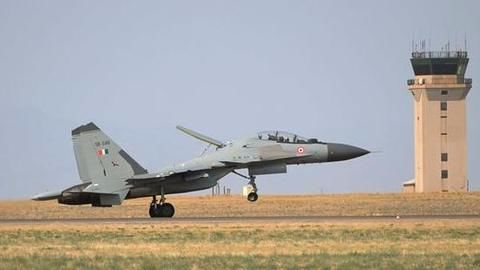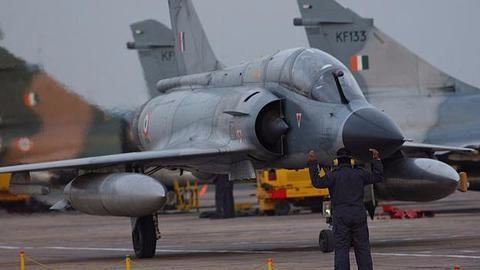By Abheet Sethi
 Indian Air Force (IAF) fighter jets will have significant advantages if they are required to operate against Chinese aircraft over Tibet in the event of hostilities.
Indian Air Force (IAF) fighter jets will have significant advantages if they are required to operate against Chinese aircraft over Tibet in the event of hostilities.
The assessment, first reported by NDTV's Vishnu Som, is based on a new unreleased document by a former IAF fighter pilot.
It comes amid heightened bilateral tensions arising from standoff between Indian and Chinese troops in Doklam.
In context: IAF warplanes have major advantage over China
09 Aug 2017Report: Indian Air Force warplanes have major advantage over China's
What"Terrain, Technology and Training" gives IAF an edge over PLAAF
The assessment, titled 'The Dragon's Claws: Assessing China's PLAAF Today' was made by by former IAF fighter pilot Squadron Leader Sameer Joshi for Vayu aerospace.
Joshi says that "Terrain, Technology and Training, will assuredly give the IAF an edge over the PLAAF (People's Liberation Army Air Force) in Tibet and southern Xinjiang."
This would allow the IAF to counterbalance the PLAAF's numerical superiority.
Chinese fighter jets at disadvantage due to high-altitude airbases
The PLAAF's primary airbases are located in areas in Tibet having high-altitudes and low air densities. This prevents frontline Chinese fighter planes such as the Su-27, J-11 or J-10 from taking off with a full complement of fuel and weapons, negatively affecting their operational abilities.
IAF airbases such as Kalaikunda, Chabua and Hasimara are located near sea level elevations in India's Northeast region.
As a result, "IAF has no such restrictions and will effectively undertake deep penetration and air superiority missions in the Tibetan Autonomous Region," notes Joshi.
The IAF is also believed to have more air combat experience and exposure to international exercises, giving it an upper hand.
ExplainedFlying over mountainous Tibetan region still poses huge challenges
IAF infrastructure will be vulnerable to attack by the China's sizeable ballistic missile forces.
China also possesses advanced surface-to-air missile (SAM) systems, including S-300, HQ-9 and HQ-12, which would pose a threat to IAF's operations.
However, flying in the mountainous Tibetan Autonomous Region will make it difficult for the IAF and PLAAF as well as Chinese SAMs to detect and shoot down enemy aircraft.

No comments:
Post a Comment